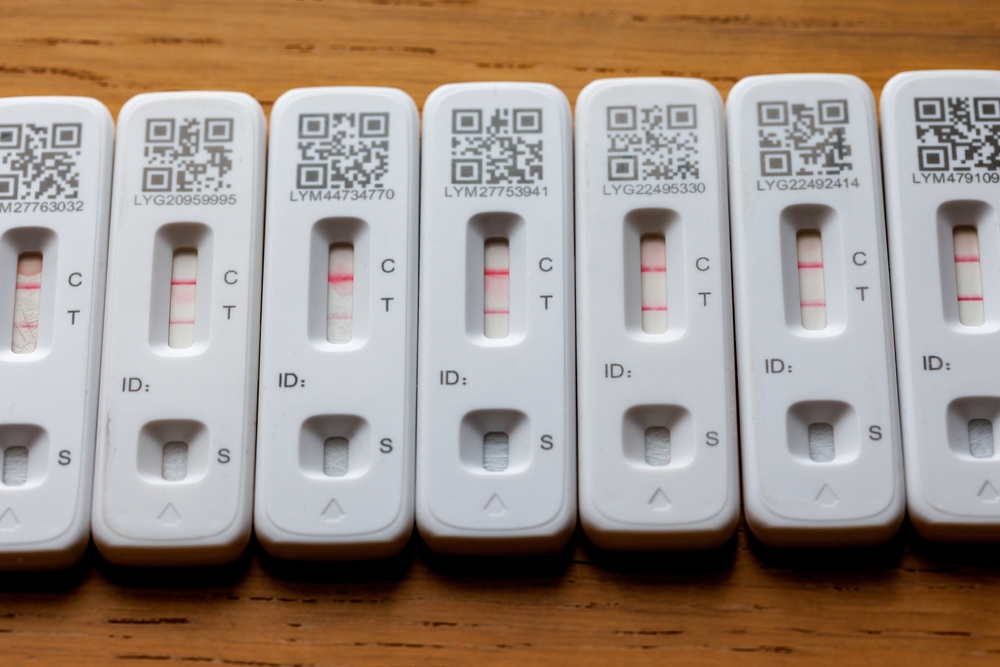The rumors are true: lemon juice, soda, and other beverages can be misused to provide false-positive results on certain tests, such as lateral flow tests.
This piece of knowledge grew during the COVID-19 pandemic when schoolkids in the UK were reportedly using this trick to forge at-home tests to get out of class. However, there is some evidence it also works on other lateral flow tests, such as pregnancy tests.
In 2021, a study published in the International Journal of Infectious Diseases tested out whether they could achieve false-positive test results on a COVID lateral flow test using a number of beverages, including Coca-Cola, a bunch of other sodas and soft drinks, energy drinks, vodka, whiskey, and brandy.
Remarkably, all of these liquids created false-positive results when applied to the test without the buffer solution.
This isn’t the only research that’s come to this conclusion. Another paper published in 2021 carried out a similar experiment and found that a variety of sodas and non-alcoholic soft drinks can be used to forge false-positive results on COVID lateral flow tests.
To understand why this is the case, you need a rough understanding of how lateral flow tests function. They work by detecting the presence of a target substance in a liquid sample. In the case of pregnancy tests, that will be a specific hormone, but in COVID-19 tests, it will be a certain protein found in the SARS-CoV-2 virus particle.
Cola or COVID? A test is considered positive if the control line and the T-line turn red after applying the sample.
Image credit: MagicBones/Shutterstock.com
Once the liquid sample is applied, it will be drawn across an absorbent pad, like sticking a piece of kitchen roll in a glass of water. Eventually, it will reach a strip (called the T-line) in the pad that’s covered in antibodies for the target molecule. These antibodies are also attached to gold nanoparticles – tiny particles of gold actually appear red – which allow us to see where the antibodies are on the device.
If the target substance is in the liquid sample, the gold-labeled antibodies on the strip’s T-line bind to it and turn red, signaling its presence.
However, the target molecule wouldn’t (in theory) be found in soda or any other beverage, so why does it trigger the antibodies in the test?
The answer might have something to do with the acidity of the drinks. Lemon juice is very acidic with a pH of about 2 due to its citric acid, while Coca-Cola and other sodas have a pH of 2 to 3, mainly due to phosphoric acid.
An acidic solution, like soda, will help to disrupt the antibodies in the T-line. Denatured and immobilized, the broken protein will lay here on the strip and accumulate on the T-line, turning it red.
“Denatured proteins are sticky beasts. All of those perfectly evolved interactions that would normally hold the protein together are now orphaned and looking for something to bind to. So a likely explanation is that the immobilized antibodies at the T-line stick directly to the gold particles as they pass by, producing the notorious cola-induced false positive result,” Mark Lorch, a Professor of Science Communication and Chemistry at the University of Hull, wrote in an article for The Conversation.
Professor Lorch went on to explain that there is one relatively easy way to see whether a test has been tampered with in this way. If you simply wash the line with the buffer solution that comes with the test, the immobilized antibodies at the T-line will regain normal function and release the gold particles, revealing the true negative result on the test.
It’s pretty complicated stuff, but you have to hand it to the schoolkids and TikTokers who revealed this flaw during the COVID-19 pandemic; many scientists were initially clueless about how and why lateral flows reacted in such a strange way to soda, fruit juice, or liquor.
Source Link: Why Lemon Juice And Sodas Can Cause False Positives In Some Tests
